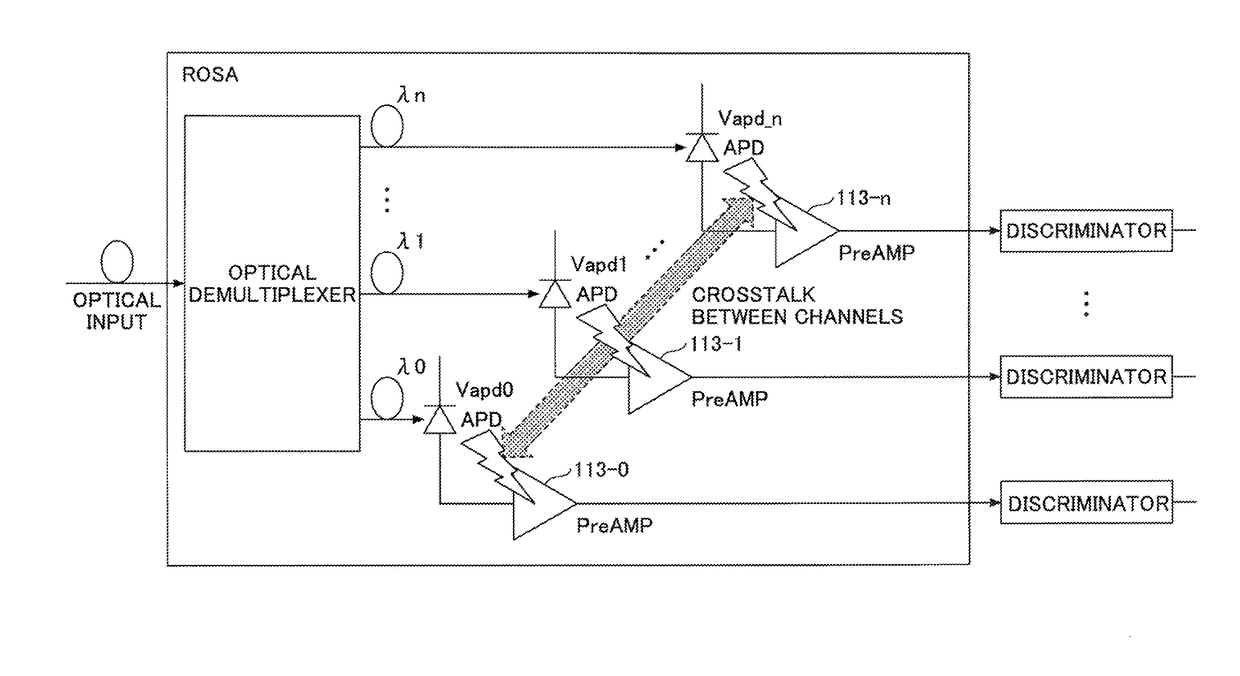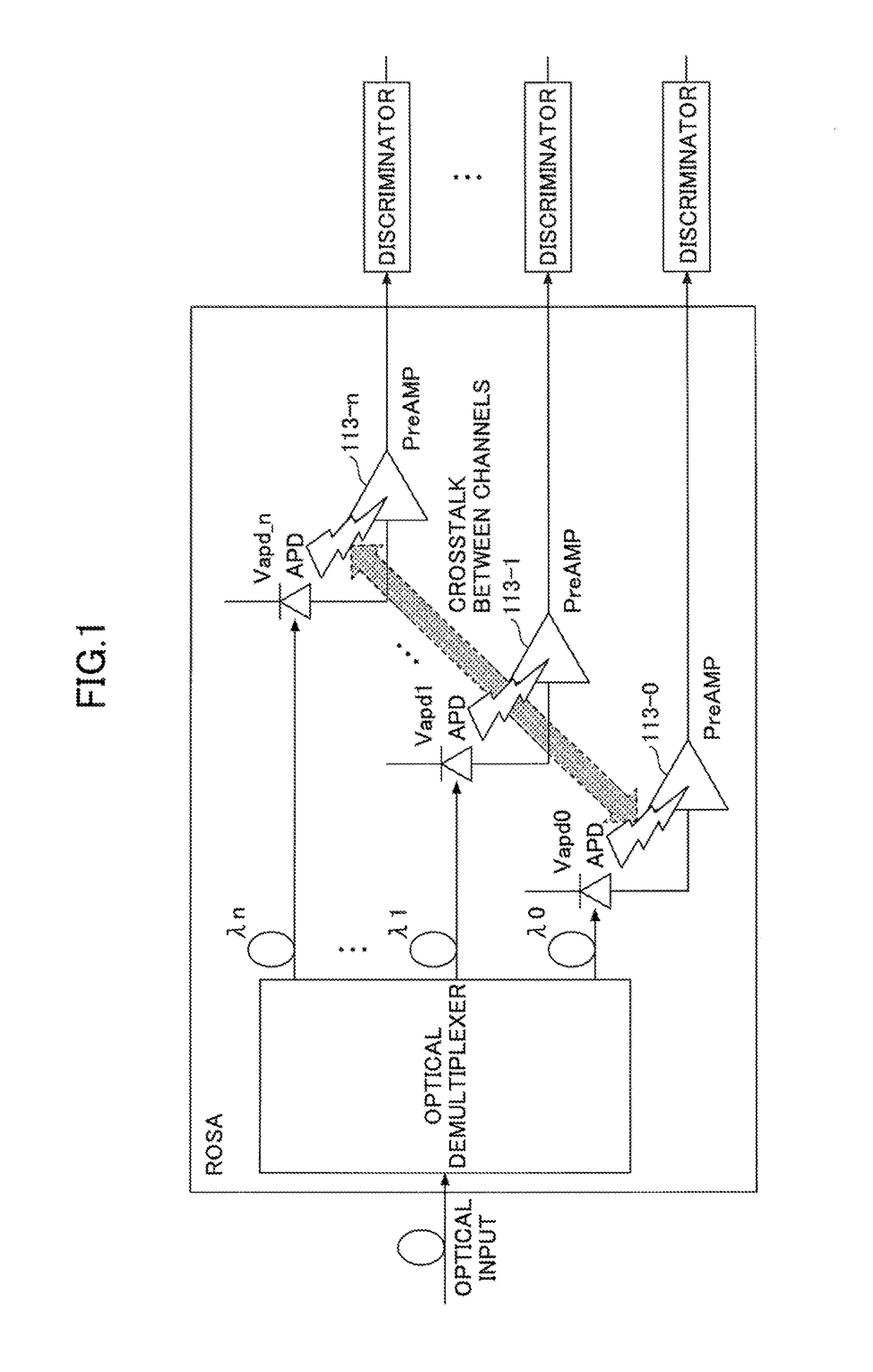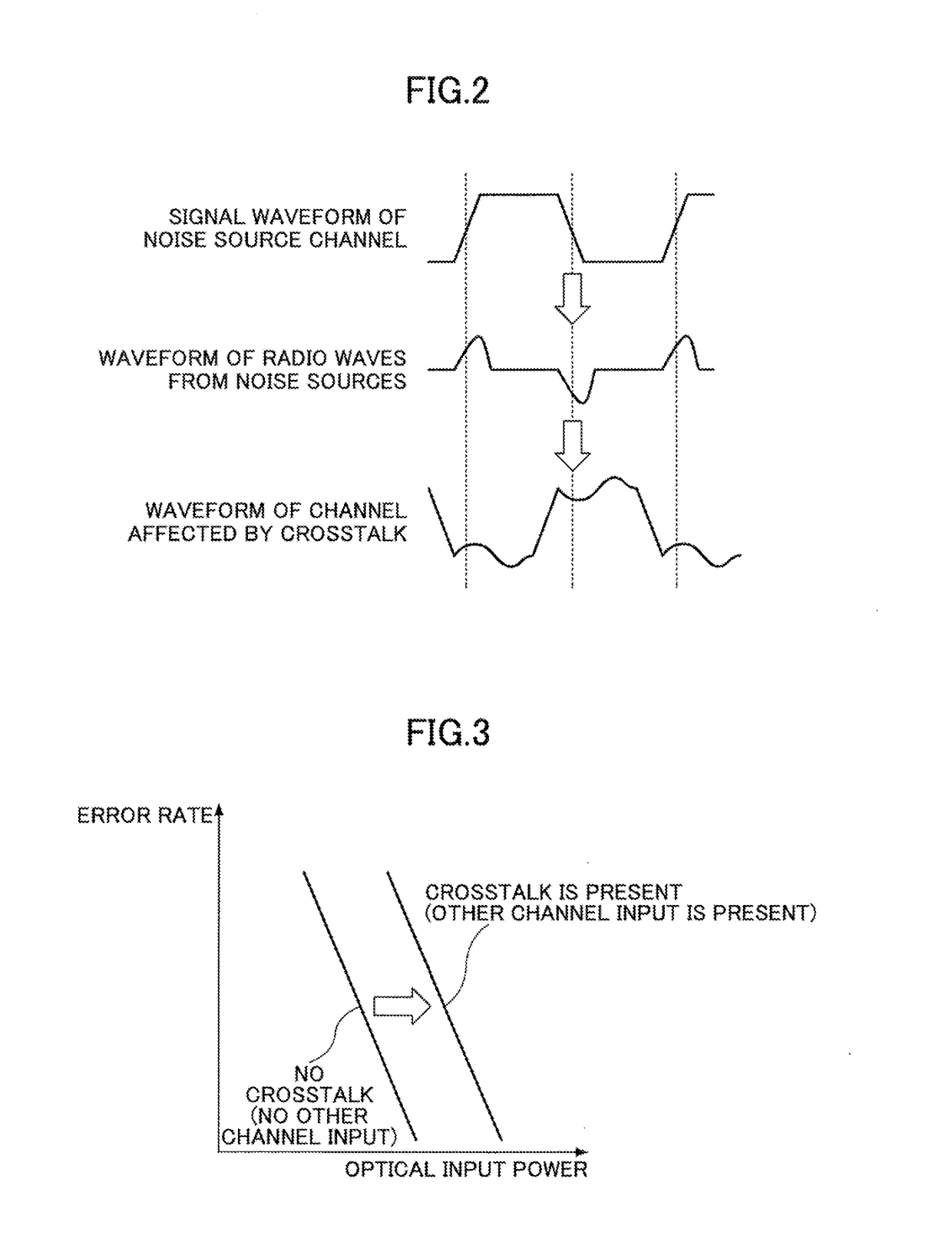Optical receiver, optical transceiver, and optical signal reception control method
a technology of optical transceiver and optical receiver, applied in the direction of electromagnetic transceivers, multi-component communication, wavelength-division multiplex systems, etc., can solve the problems of difficult disposal of soa and voa
- Summary
- Abstract
- Description
- Claims
- Application Information
AI Technical Summary
Benefits of technology
Problems solved by technology
Method used
Image
Examples
first embodiment
Modification of First Embodiment
[0061]The configuration and method of the first embodiment are not limited to the examples described above. As the reference channel among the multiple channels, a channel in which the maximum photocurrent flows may be selected instead of the channel with the minimum current value. When priority is given to reducing the amount of noise with respect to other channels, the S / N ratio is optimized by setting the channel with the smallest current monitor value to the reference channel and matching the voltage values of the other channels to the photocurrent multiplication factor of the reference channel. However, for accurate data detection it is desirable to have an input power that is greater than a certain level. Hence, control to optimize the S / N ratio by matching the photocurrent amounts of multiple channels to the maximum current monitor value is also effective for reducing the effect of crosstalk. In this case, for example, the ratio of the current ...
second embodiment
[0067]FIG. 10 is a schematic diagram of an optical receiver 10B of a second embodiment. In the second embodiment, the amplitudes of the voltage signals output from the preamplifiers 113-0 to 113-n are monitored instead of monitoring the photocurrent flowing in the APD, and voltage control is performed based on the monitored results.
[0068]The optical receiver 10B includes an optical reception module 11B, power supply circuits 15-0 to 15-n, and amplitude detection circuits 115-0 to 115-n as monitor circuits. In the optical receiver 10B, a clock data recovery (CDR) 12, a temperature detection circuit 17, and a control integrated circuit (IC) 30 are also used; however, these components may be used in common with an optical transmitter in an optical transceiver.
[0069]Similar to the first embodiment, in the optical reception module 11B, multichannel input optical signals are demultiplexed into respective channels by the optical demultiplexer 111 and the demultiplexed optical signals are p...
third embodiment
[0080]FIG. 13 depicts a flowchart of voltage control of a third embodiment.
[0081]Since a multiplication factor of the photocurrent of the APDs 112-0 to 112-n has temperature dependency, control corresponding to a temperature change may be incorporated in bias control that reduces the effect of crosstalk.
[0082]FIGS. 14A and 14B are graphs illustrating temperature dependency of a photocurrent multiplication factor of the APD. FIG. 14A is a diagram illustrating a relationship between APD bias voltage (Vapd) and photocurrent (Iapd) at different temperatures, and FIG. 14B a diagram illustrating a relationship between temperature (T) and bias voltage (VB). As illustrated in FIG. 14A, a slope of a photocurrent change with respect to the applied bias voltage is greater at a low temperature side. As described in the first embodiment, by using one reset change amount, which is adjusted in advance to the low temperature side, the optimum multiplication factor may also be achieved, while repeat...
PUM
 Login to View More
Login to View More Abstract
Description
Claims
Application Information
 Login to View More
Login to View More - R&D
- Intellectual Property
- Life Sciences
- Materials
- Tech Scout
- Unparalleled Data Quality
- Higher Quality Content
- 60% Fewer Hallucinations
Browse by: Latest US Patents, China's latest patents, Technical Efficacy Thesaurus, Application Domain, Technology Topic, Popular Technical Reports.
© 2025 PatSnap. All rights reserved.Legal|Privacy policy|Modern Slavery Act Transparency Statement|Sitemap|About US| Contact US: help@patsnap.com



